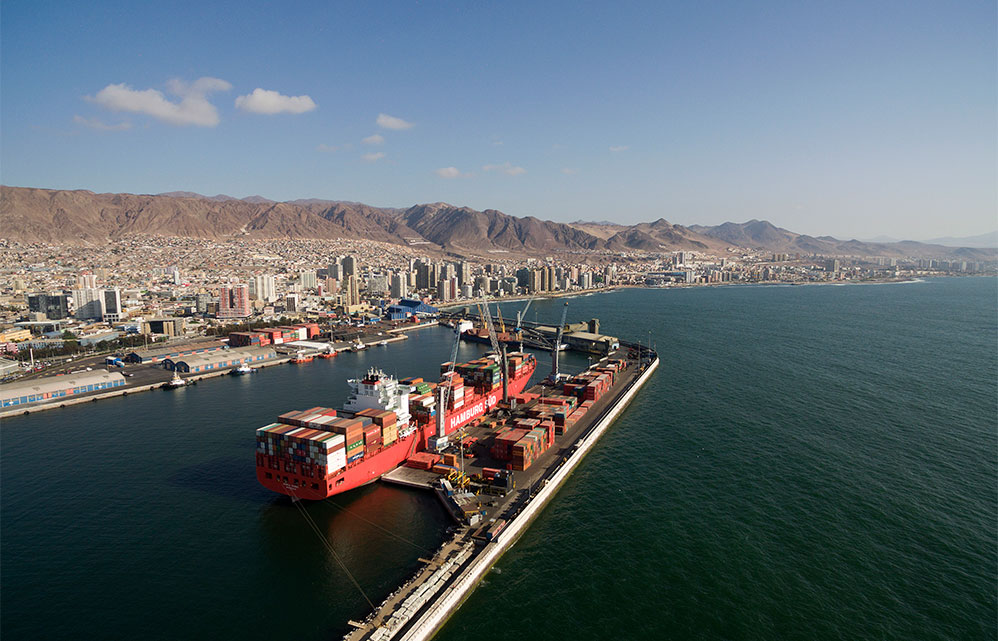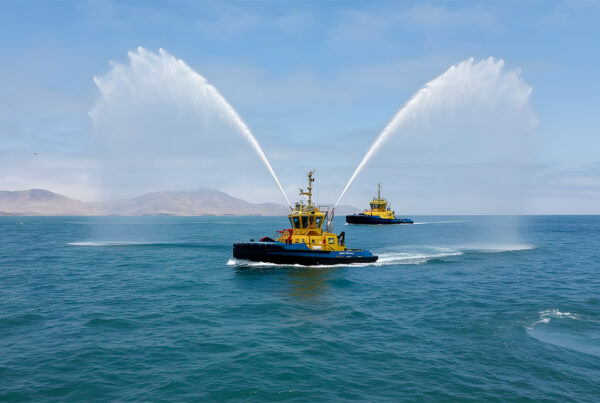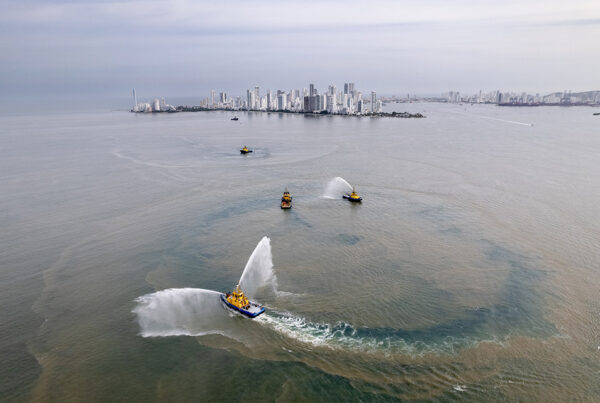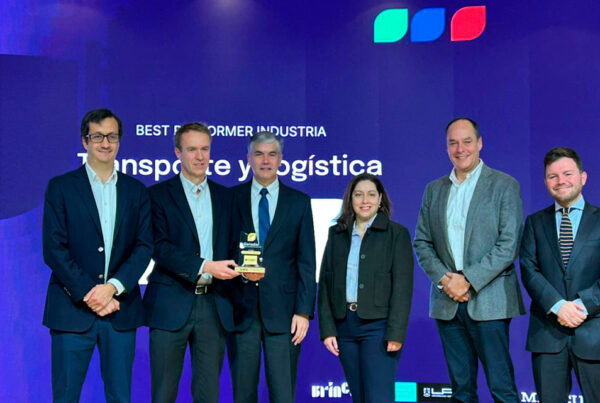
Last year, the terminal increased cargo imports and exports by 5% over 2017, reaching 2.6 million tons transferred.
Antofagasta, January 14, 2019. For Antofagasta Terminal Internacional (ATI), the year 2018 presented major challenges, during which the company continued to manage cost efficiency and worked to modify wave height regulations. It implemented new technologies to move forward on environmental matters, restructured its sustainability area and completed a collective bargaining process.
Last year was also a time of major achievements for ATI. During the period, it increased cargo transfer by 5% over 2017, surpassing 2.6 million tons, mainly because of a 26% rise in containers transferred.
This improvement can be attributed in part to two routes to Asia that the terminal began servicing, both with 10,000 TEU vessels measuring up to 347 meters in length. It also began to handle other new cargo that, in aggregate, led to 25% growth in fractionated cargo, some of which was related to imports of iron for different industries in the region.
Sodium carbonate, a key input for the mining industry, has also experienced growth of over 15%, in line with the expansion of the lithium industry, which is served by ATI.
“This volume growth shows us that the regional market is enjoying sustained recovery, while customers are confiding in ATI as a competitive and strategic partner in northern Chile,” remarked the CEO of ATI, Enrique Arteaga.
Among its achievements in 2018, ATI met 100% of its commitments in the Clean Production Agreement (APL in Spanish), with a series of measures to prevent and control potential particulate matter emissions. Among other actions, these included implementing a system of spreaders to use with rotainers and to discontinue stockpiling of copper and zinc concentrate using the Concentrate Stockpiling System (SAC in Spanish) and the Bulk Mineral Embarkation Terminal (TEGM in Spanish).
The company also celebrated a series of operational milestones such as the arrival of the first Maersk vessel for the AC3 service; the entry of the largest vessel on the AN1 service, comprised mainly of HAPAG LLOYD, ONE, MSC and HYUNDAI (measuring 48 meters in beam, or 19 rows of containers from dock to sea), and a performance record in unloading the vessel Mn Nordic Macau, with 419 boxes/shift.
Arteaga commented that next year’s greatest challenge is to obtain authorization to operate at a greater wave height, raising the current restriction from 1.5 to 1.75 meters. “This will allow us to give shipping companies greater certainty in receiving their vessels, increasing port uptime and enabling customers to import and export new cargo transferred in containers,” he maintained.
Strengthening our capacities, consolidating the sustainability area and building a closer relationship with the community of Antofagasta are some of the challenges that ATI has defined for 2019.





